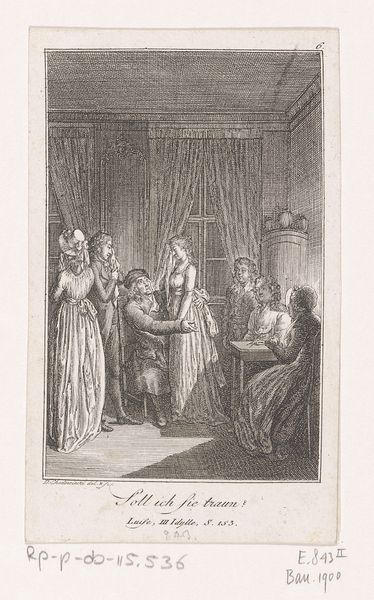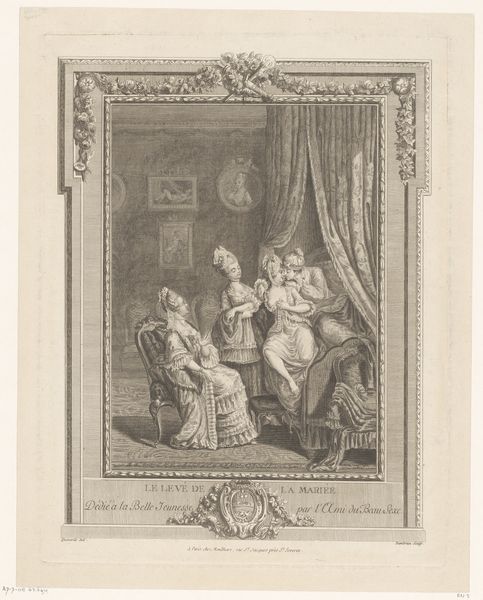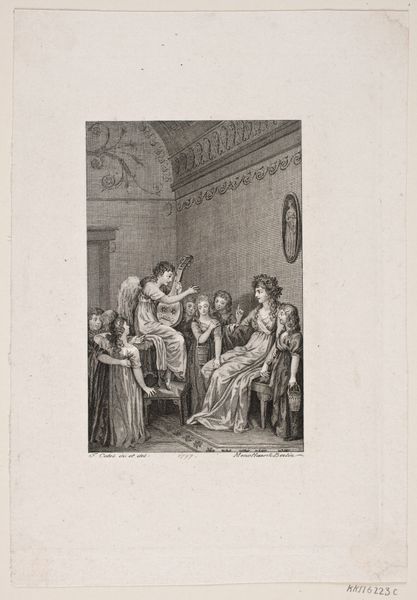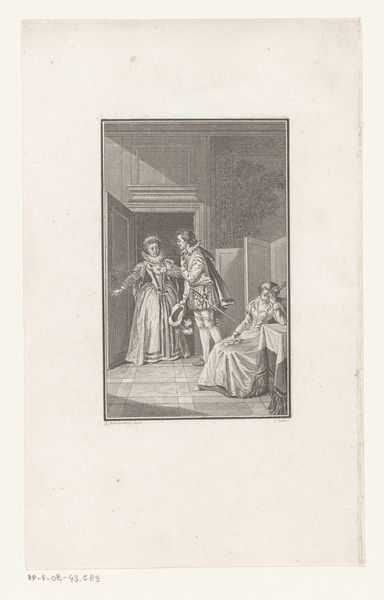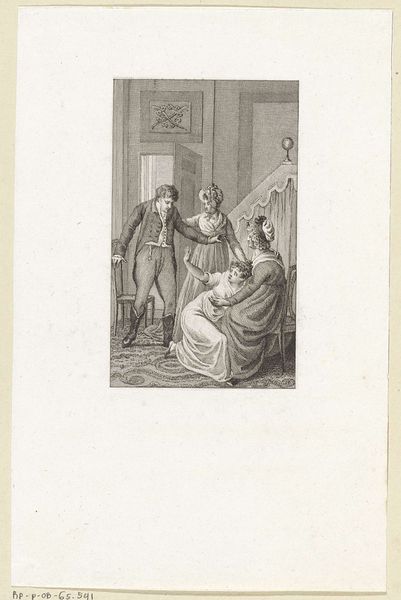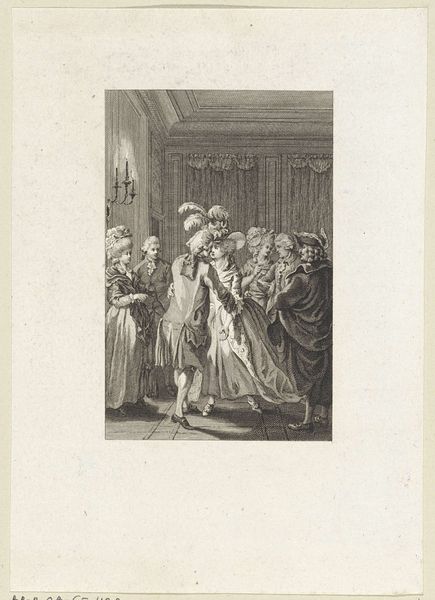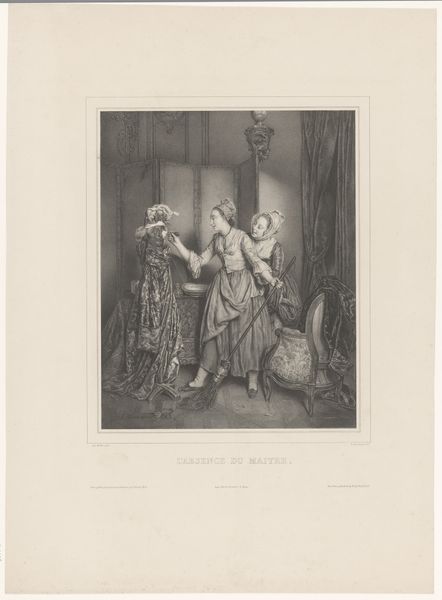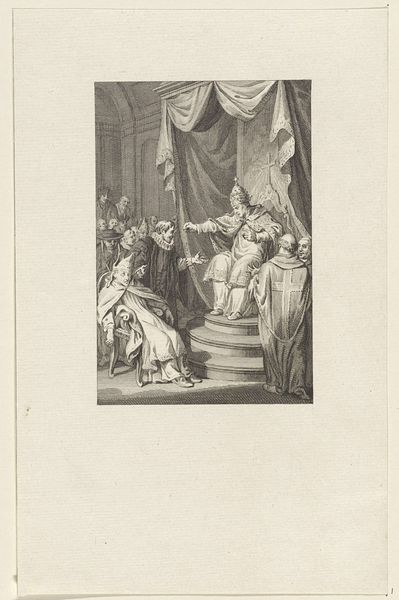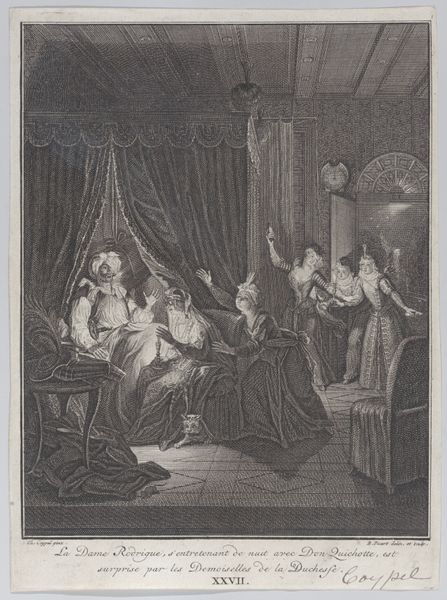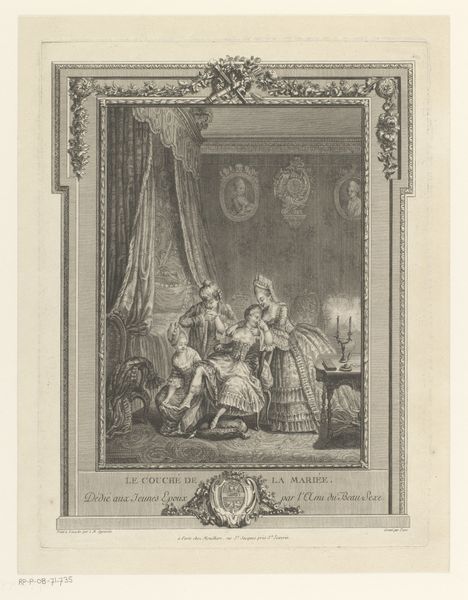
Dimensions: height 166 mm, width 120 mm
Copyright: Rijks Museum: Open Domain
Jacob Folkema created this engraving, titled "Kneeling Man at the Bed of his Beloved," sometime before his death in 1767. Engraving is an intaglio process, meaning the image is incised into a surface—in this case, a copper plate. The artist would have used a tool called a burin to carve lines into the metal, then ink the plate so that the ink fills those lines. The plate is then pressed against paper, transferring the image. The process allows for incredibly fine detail, as you can see in the intricate patterns of the fabrics and the delicate rendering of the figures' faces. But it's also a labor-intensive process, requiring great skill and precision. In Folkema’s time, printmaking was essential for disseminating images and ideas. Engravers were highly valued for their ability to reproduce paintings and drawings, making them accessible to a wider audience. The very act of engraving, with its emphasis on meticulous craftsmanship, elevates the scene, and the status of those represented within it, to the level of high art.
Comments
No comments
Be the first to comment and join the conversation on the ultimate creative platform.

